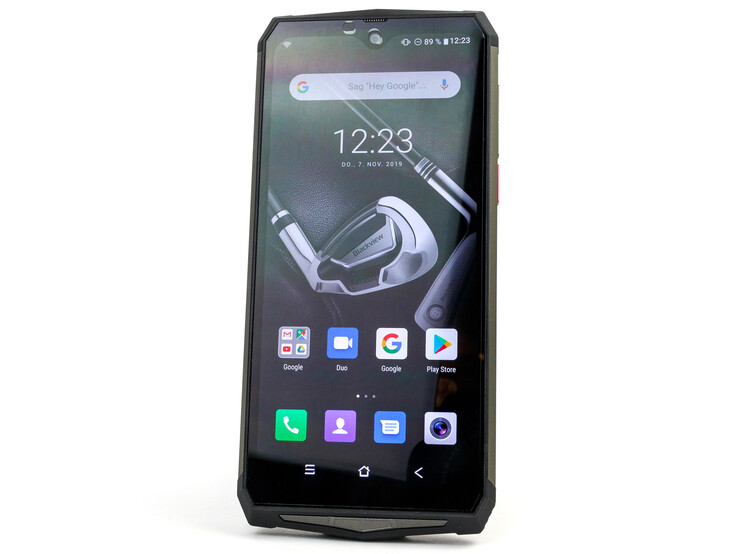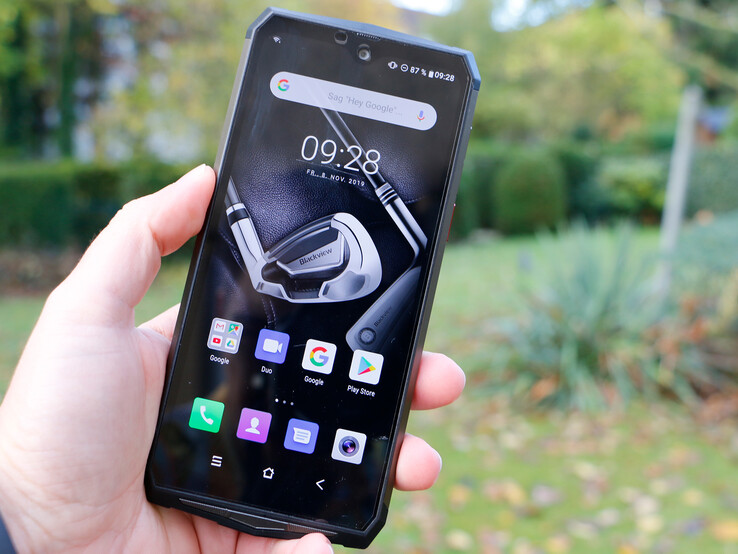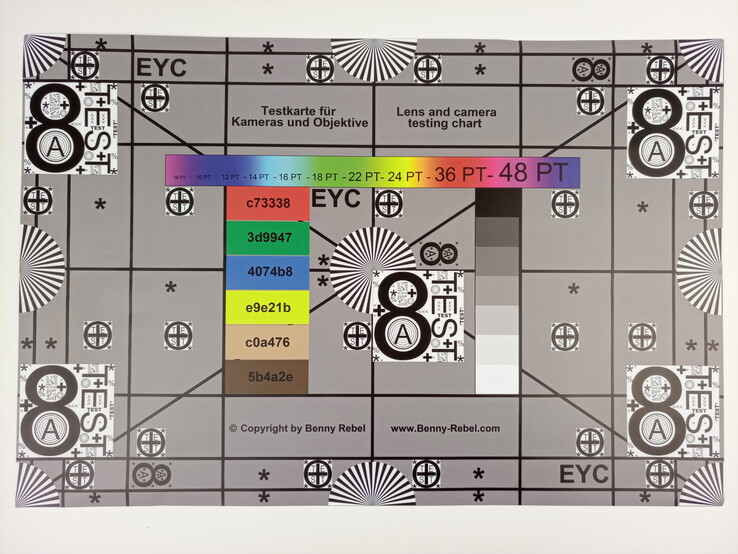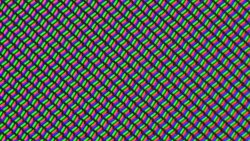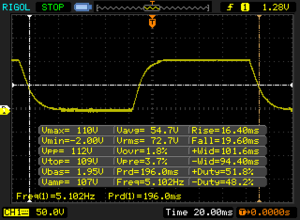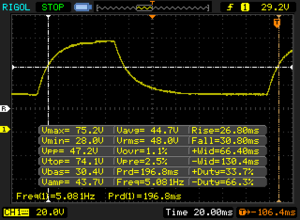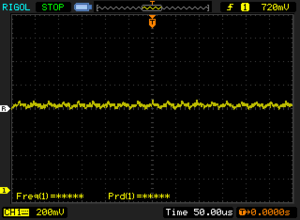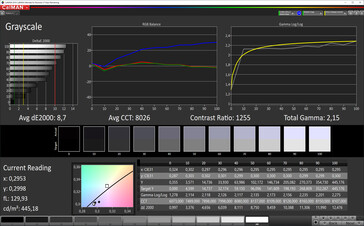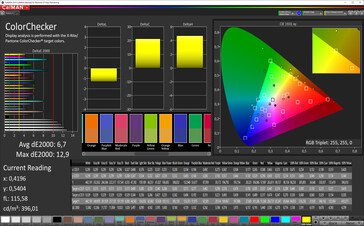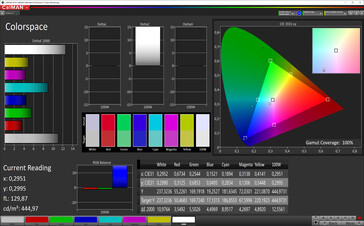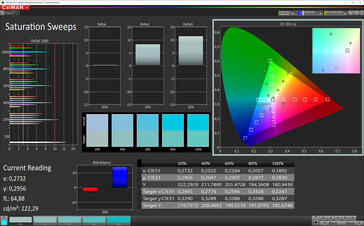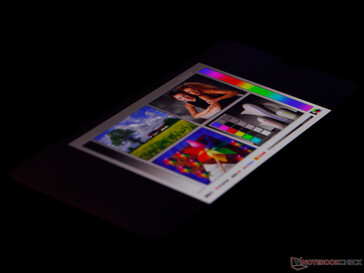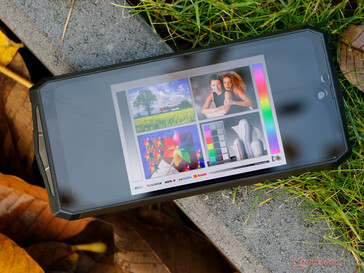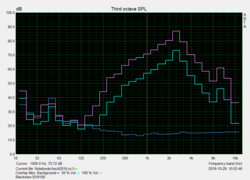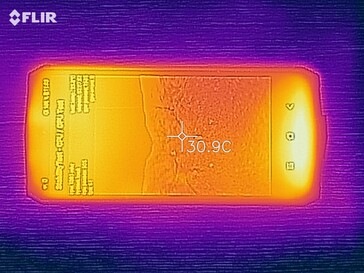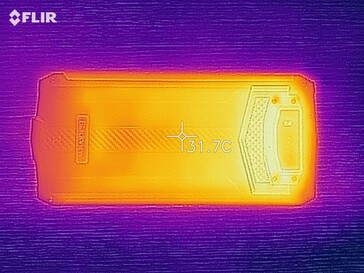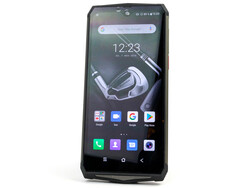Blackview BV9100 Review - Huge smartphone with 13,000 mAh battery
Comparison Units
Bewertung | Rating Version | Datum | Modell | Gewicht | Laufwerk | Groesse | Aufloesung | Preis ab |
|---|---|---|---|---|---|---|---|---|
| 73.7 % | 7 | 12/2019 | Blackview BV9100 Helio P35 MT6765, PowerVR GE8320 | 408 g | 64 GB eMMC Flash | 6.30" | 2340x1080 | |
| 79.2 % | 7 | 02/2019 | Motorola Moto G7 Power SD 632, Adreno 506 | 193 g | 64 GB eMMC Flash | 6.20" | 1570x720 | |
| 79.4 % | 6 | 01/2019 | Ulefone Armor 3T Helio P23 MT6763T, Mali-G71 MP2 | 374 g | 64 GB eMMC Flash | 5.70" | 2160x1080 | |
| 75.9 % | 7 | 11/2019 | Gigaset GX290 Helio P23 MT6763V, Mali-G71 MP2 | 279 g | 32 GB eMMC Flash | 6.10" | 1560x720 |
Case, Equipment and Operation
The Blackview BV9100 is a heavy and massive clopper that is also extremely durable. The smartphone can withstand falls from 1.5 metres and is IP68/IP69K protected against dust and water ingress, including hot water under high pressure. It has also passed unspecified tests according to MIL-STD-810G. The workmanship is solid and gives no cause for criticism.
The USB 2.0 port has the Type C design and can handle OTG. The memory is expandable via microSD card, but the exFAT file system is not supported. There is no audio jack, instead the included headset can be connected directly via the USB-C port, which is protected by a cover. The connected headphones also serve as an antenna for the integrated FM radio receiver.
The operating system used is Android 9.0 Pie, which has the security patches of August 5, 2019 at the time of testing and is not particularly up-to-date. With regular updates from the manufacturer should not be planned here anyway.
The connection options include LTE, for which the manufacturer does not specify the maximum transfer rates, but due to the SoC used, LTE Cat. 7 is possible at best, but the frequency coverage is good. There is also a fast dual-band WLAN, which shows slight fluctuations when sending data. However, these should not be noticeable in everyday life. NFC and Bluetooth 5.0 complete the equipment.
Handling the BV9100 is a bit difficult, as the device becomes quite heavy in the long run and the thick frames make it difficult to operate the rugged smartphone with one hand. The fingerprint sensor is inconspicuously integrated in the right frame and does its job properly. 2D face recognition is also offered.
| Networking | |
| iperf3 transmit AX12 | |
| Blackview BV9100 | |
| Gigaset GX290 | |
| Ulefone Armor 3T | |
| Motorola Moto G7 Power | |
| iperf3 receive AX12 | |
| Blackview BV9100 | |
| Gigaset GX290 | |
| Ulefone Armor 3T | |
| Motorola Moto G7 Power | |
Cameras - Blackview with weak dual camera
On the front there is a 16-MP camera, which takes good pictures in good lighting conditions. At its full magnification, however, these appear surprisingly undetailed, but for social media and Co. the performance is more than sufficient.
The second lens of the dual camera on the back only collects depth information, there is no telephoto or ultra wide angle lens. The shots are not completely convincing even in daylight, because the optics don't manage to make a clean white balance in every situation. The details appear partially blurred at full magnification. In difficult lighting situations, the dual LED should always be used.
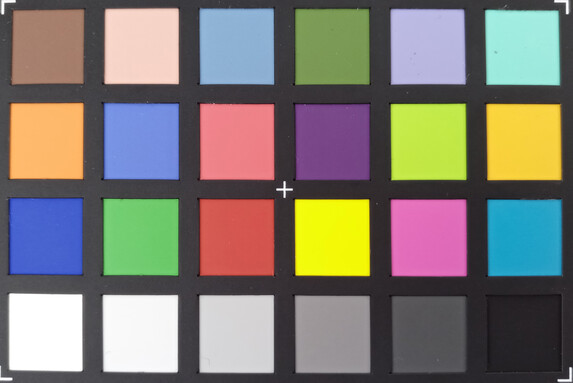
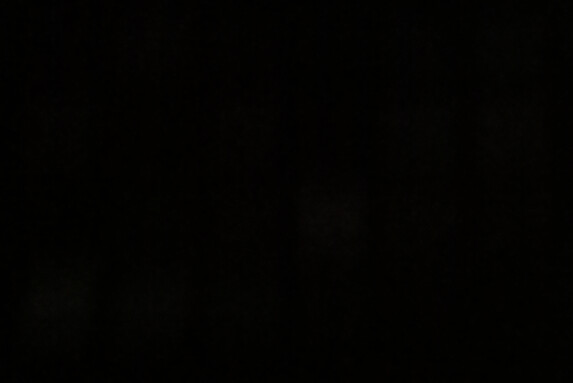
Display - BV9100 reveals weaknesses in APL test
The Blackview BV9100's 6.3-inch IPS display is quite bright during full-surface measurement and above all has a good black level, which results in a strong contrast ratio. However, if we repeat the measurement with an even distribution of light and dark areas, the luminosity in the center of the screen drops to 337 cd/m² and the black level rises to 0.41 cd/m², resulting in a weaker contrast ratio (822:1). In everyday life, however, this subjectively leaves a good impression. Outside, the panel reaches its limits on sunny days. Especially with regard to the outdoor characteristics, we would have liked a slightly higher maximum brightness.
| |||||||||||||||||||||||||
Brightness Distribution: 92 %
Center on Battery: 448 cd/m²
Contrast: 1318:1 (Black: 0.34 cd/m²)
ΔE Color 6.7 | 0.5-29.43 Ø5
ΔE Greyscale 8.7 | 0.57-98 Ø5.3
100% sRGB (Calman 2D)
Gamma: 2.15
| Blackview BV9100 IPS, 2340x1080, 6.30 | Motorola Moto G7 Power IPS, 1570x720, 6.20 | Ulefone Armor 3T IPS, 2160x1080, 5.70 | Gigaset GX290 IPS, 1560x720, 6.10 | |
|---|---|---|---|---|
| Response Times | 21% | -25% | 46% | |
| Response Time Grey 50% / Grey 80% * | 57.6 ? | 56 ? 3% | 74.8 ? -30% | 34.4 ? 40% |
| Response Time Black / White * | 36 ? | 22 ? 39% | 43.2 ? -20% | 17.6 ? 51% |
| PWM Frequency | 556 ? | |||
| Screen | 23% | 7% | -5% | |
| Brightness middle | 448 | 608 36% | 414 -8% | 635 42% |
| Brightness | 432 | 585 35% | 425 -2% | 615 42% |
| Brightness Distribution | 92 | 92 0% | 89 -3% | 91 -1% |
| Black Level * | 0.34 | 0.36 -6% | 0.27 21% | 0.39 -15% |
| Contrast | 1318 | 1689 28% | 1533 16% | 1628 24% |
| Colorchecker dE 2000 * | 6.7 | 5.08 24% | 6 10% | 10.5 -57% |
| Colorchecker dE 2000 max. * | 12.9 | 8.74 32% | 13.1 -2% | 17.9 -39% |
| Greyscale dE 2000 * | 8.7 | 5.9 32% | 6.8 22% | 11.8 -36% |
| Gamma | 2.15 102% | 2.219 99% | 2.41 91% | 1.86 118% |
| CCT | 8026 81% | 7772 84% | 8157 80% | 9570 68% |
| Total Average (Program / Settings) | 22% /
22% | -9% /
0% | 21% /
5% |
* ... smaller is better
Display Response Times
| ↔ Response Time Black to White | ||
|---|---|---|
| 36 ms ... rise ↗ and fall ↘ combined | ↗ 16.4 ms rise | |
| ↘ 19.6 ms fall | ||
| The screen shows slow response rates in our tests and will be unsatisfactory for gamers. In comparison, all tested devices range from 0.1 (minimum) to 240 (maximum) ms. » 93 % of all devices are better. This means that the measured response time is worse than the average of all tested devices (21.5 ms). | ||
| ↔ Response Time 50% Grey to 80% Grey | ||
| 57.6 ms ... rise ↗ and fall ↘ combined | ↗ 26.8 ms rise | |
| ↘ 30.8 ms fall | ||
| The screen shows slow response rates in our tests and will be unsatisfactory for gamers. In comparison, all tested devices range from 0.2 (minimum) to 636 (maximum) ms. » 93 % of all devices are better. This means that the measured response time is worse than the average of all tested devices (33.7 ms). | ||
Screen Flickering / PWM (Pulse-Width Modulation)
| Screen flickering / PWM not detected | |||
In comparison: 53 % of all tested devices do not use PWM to dim the display. If PWM was detected, an average of 17924 (minimum: 5 - maximum: 3846000) Hz was measured. | |||
Performance, Emissions and Battery Life
The BV9100 is powered by a MediaTek Helio P35, which is sorted into the lower mid-range and supported by 4 GB RAM. The SoC provides fast system performance, but the integrated GPU is only sufficient for the needs of casual gamers. The surface temperatures remain very low even under load.
The integrated eMMC memory is fast enough and the microSD slot works comparatively fast, although the possibilities of our reference card Toshiba Exceria Pro M501 are not exhausted.
The loudspeaker on the chin side delivers very dominant highs and sounds very unbalanced, but can become very loud. The included USB-C headset fits well into the auricle and provides good sound reproduction, but even here the sound shows little depth.
The showpiece of the Blackview BV9100 is the 13,000 mAh battery. The smartphone can withstand a smooth 2,000 minutes in our WLAN test, which is almost one and a half days of continuous use. A great value, but unfortunately it doesn't speak for good efficiency due to the huge battery.
| PCMark for Android - Work 2.0 performance score (sort by value) | |
| Blackview BV9100 | |
| Motorola Moto G7 Power | |
| Ulefone Armor 3T | |
| Gigaset GX290 | |
| Average Mediatek Helio P35 MT6765 (3814 - 5794, n=11) | |
| Average of class Smartphone (9101 - 12871, n=4, last 2 years) | |
| Blackview BV9100 | Motorola Moto G7 Power | Ulefone Armor 3T | Gigaset GX290 | Average 64 GB eMMC Flash | Average of class Smartphone | |
|---|---|---|---|---|---|---|
| AndroBench 3-5 | 99% | 37% | -14% | 39% | 926% | |
| Sequential Read 256KB | 279.7 | 292.4 5% | 283.9 2% | 275.6 -1% | 273 ? -2% | 1505 ? 438% |
| Sequential Write 256KB | 106.2 | 215.2 103% | 210.6 98% | 33.77 -68% | 176.8 ? 66% | 1112 ? 947% |
| Random Read 4KB | 37.23 | 67.5 81% | 58.6 57% | 33.33 -10% | 59.1 ? 59% | 247 ? 563% |
| Random Write 4KB | 14.61 | 72 393% | 20.93 43% | 10.95 -25% | 31.7 ? 117% | 271 ? 1755% |
| Sequential Read 256KB SDCard | 81.9 ? | 86.7 ? 6% | 81.3 ? -1% | 81.1 ? -1% | 77.4 ? -5% | |
| Sequential Write 256KB SDCard | 60.7 ? | 65.4 ? 8% | 73.9 ? 22% | 74.3 ? 22% | 58.3 ? -4% |
Temperature
(+) The maximum temperature on the upper side is 34.3 °C / 94 F, compared to the average of 35 °C / 95 F, ranging from 21.9 to 56 °C for the class Smartphone.
(+) The bottom heats up to a maximum of 31 °C / 88 F, compared to the average of 33.8 °C / 93 F
(+) In idle usage, the average temperature for the upper side is 29.3 °C / 85 F, compared to the device average of 32.7 °C / 91 F.
Blackview BV9100 audio analysis
(+) | speakers can play relatively loud (90.3 dB)
Bass 100 - 315 Hz
(-) | nearly no bass - on average 27.2% lower than median
(±) | linearity of bass is average (13.5% delta to prev. frequency)
Mids 400 - 2000 Hz
(±) | higher mids - on average 9.5% higher than median
(±) | linearity of mids is average (7.2% delta to prev. frequency)
Highs 2 - 16 kHz
(±) | higher highs - on average 9.8% higher than median
(-) | highs are not linear (16% delta to prev. frequency)
Overall 100 - 16.000 Hz
(-) | overall sound is not linear (32.3% difference to median)
Compared to same class
» 80% of all tested devices in this class were better, 2% similar, 18% worse
» The best had a delta of 12%, average was 38%, worst was 134%
Compared to all devices tested
» 90% of all tested devices were better, 2% similar, 8% worse
» The best had a delta of 4%, average was 25%, worst was 134%
Gigaset GX290 audio analysis
(+) | speakers can play relatively loud (86.8 dB)
Bass 100 - 315 Hz
(-) | nearly no bass - on average 33.1% lower than median
(±) | linearity of bass is average (8.1% delta to prev. frequency)
Mids 400 - 2000 Hz
(±) | higher mids - on average 8.3% higher than median
(±) | linearity of mids is average (8.8% delta to prev. frequency)
Highs 2 - 16 kHz
(±) | higher highs - on average 8.7% higher than median
(±) | linearity of highs is average (8.6% delta to prev. frequency)
Overall 100 - 16.000 Hz
(±) | linearity of overall sound is average (29.5% difference to median)
Compared to same class
» 73% of all tested devices in this class were better, 4% similar, 23% worse
» The best had a delta of 12%, average was 38%, worst was 134%
Compared to all devices tested
» 85% of all tested devices were better, 3% similar, 12% worse
» The best had a delta of 4%, average was 25%, worst was 134%
Battery Life
| Blackview BV9100 13000 mAh | Gigaset GX290 6200 mAh | Motorola Moto G7 Power 5000 mAh | Ulefone Armor 3T 10300 mAh | Average of class Smartphone | |
|---|---|---|---|---|---|
| Battery Runtime | |||||
| WiFi Websurfing | 2000 | 1316 -34% | 2143 7% | 1901 -5% | 913 ? -54% |
Pros
Cons
Verdict - Indestructible Crusher
The Blackview BV9100 is distinguished above all by its exceptional user qualities, which are reflected in its high IP certification and impact resistance. In addition, it has a massive 13,000 mAh battery, which provides for very long battery life, but slightly falls short of expectations.
The BV9100 is the Mountain among smartphones - indestructible and massive.
The system performance of the Blackview smartphone is good, only friends of complex games will be shown their limits. But just because of its high weight, the BV9100 is not suitable for extensive gaming sessions. In general, the rugged-cell phone is very heavy and thick, there is no room for it in a trouser pocket. Practical that it has a strap for an optional carrying strap.
The display is bright enough, but drops off quite a bit in the APL test. Moreover, the dual camera isn't really convincing and is only suitable for occasional snapshots. But the Blackview BV9100 is certainly an exciting alternative for users who like to be outdoors and have the option of putting their smartphone in a backpack. Especially since outdoor positioning also works well.
Blackview BV9100
-
12/11/2019 v7
Daniel Schmidt


 Deutsch
Deutsch English
English Español
Español Français
Français Italiano
Italiano Nederlands
Nederlands Polski
Polski Português
Português Русский
Русский Türkçe
Türkçe Svenska
Svenska Chinese
Chinese Magyar
Magyar